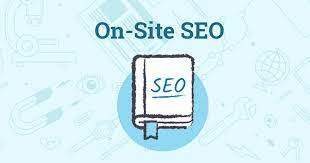
Search Engine Optimization (SEO) is a crucial aspect of any successful online presence. While off-site SEO strategies like link building and social media marketing are important, on-site SEO plays a significant role in determining your website’s search engine rankings.
On-site SEO, also known as on-page SEO, refers to the optimization of individual web pages to improve their visibility and relevance to search engines. By optimizing various elements on your website, you can enhance its chances of ranking higher in search engine results pages (SERPs) and attracting more organic traffic.
Implementing effective on-site SEO practices offers numerous benefits for your website:
In conclusion, on-site SEO is a fundamental aspect of digital marketing that should not be overlooked. By optimizing your website’s on-page elements according to best practices, you can significantly improve its visibility, attract more organic traffic, and ultimately achieve better online success. Invest in on-site SEO today to set a strong foundation for long-term growth and competitiveness in the digital landscape.
Optimizing your page titles with relevant keywords is a crucial aspect of on-site SEO. By incorporating targeted keywords into your page titles, you can effectively communicate the topic and relevance of your content to search engines. This optimization not only helps search engines understand the focus of your page but also increases the likelihood of your website ranking higher in search results for those specific keywords. A well-crafted page title that includes relevant keywords can improve click-through rates and attract more organic traffic to your website, ultimately enhancing its visibility and online presence.
Creating unique and descriptive meta descriptions for each page is a crucial aspect of on-site SEO. Meta descriptions serve as a concise summary of the content on a webpage and play a significant role in attracting users to click through from search engine results. By crafting compelling meta descriptions that accurately represent the page’s content and include relevant keywords, you can improve the likelihood of users clicking on your link, ultimately driving more organic traffic to your website. Additionally, well-crafted meta descriptions can enhance your site’s visibility in search results and contribute to a positive user experience by setting clear expectations for visitors.
Utilizing headings (such as H1, H2, etc.) to structure your content is a crucial tip for on-site SEO. By incorporating relevant keywords into your headings, you not only make it easier for search engines to understand the context of your content but also improve the readability and organization of your webpage for users. Headings serve as signposts that guide both search engine crawlers and visitors through your content, highlighting key information and enhancing the overall user experience. Implementing this practice can help boost your website’s search engine rankings and increase its visibility to potential audiences searching for related topics.
When it comes to on-site SEO, optimizing images with descriptive filenames and alt text is a crucial tip to enhance your website’s visibility and accessibility. By using relevant keywords in image filenames and providing descriptive alt text, you not only improve the chances of your images appearing in search results but also make your content more accessible to visually impaired users who rely on screen readers. This simple yet effective practice can boost your website’s overall SEO performance and contribute to a better user experience for all visitors.
To enhance your on-site SEO performance, it is crucial to prioritize fast loading speed by optimizing code, images, and server response time. Efficiently written code, properly compressed images, and a swift server response all contribute to a seamless user experience and improved search engine rankings. By focusing on these optimization techniques, you can ensure that your website loads quickly, engages visitors effectively, and positively impacts your overall SEO efforts.